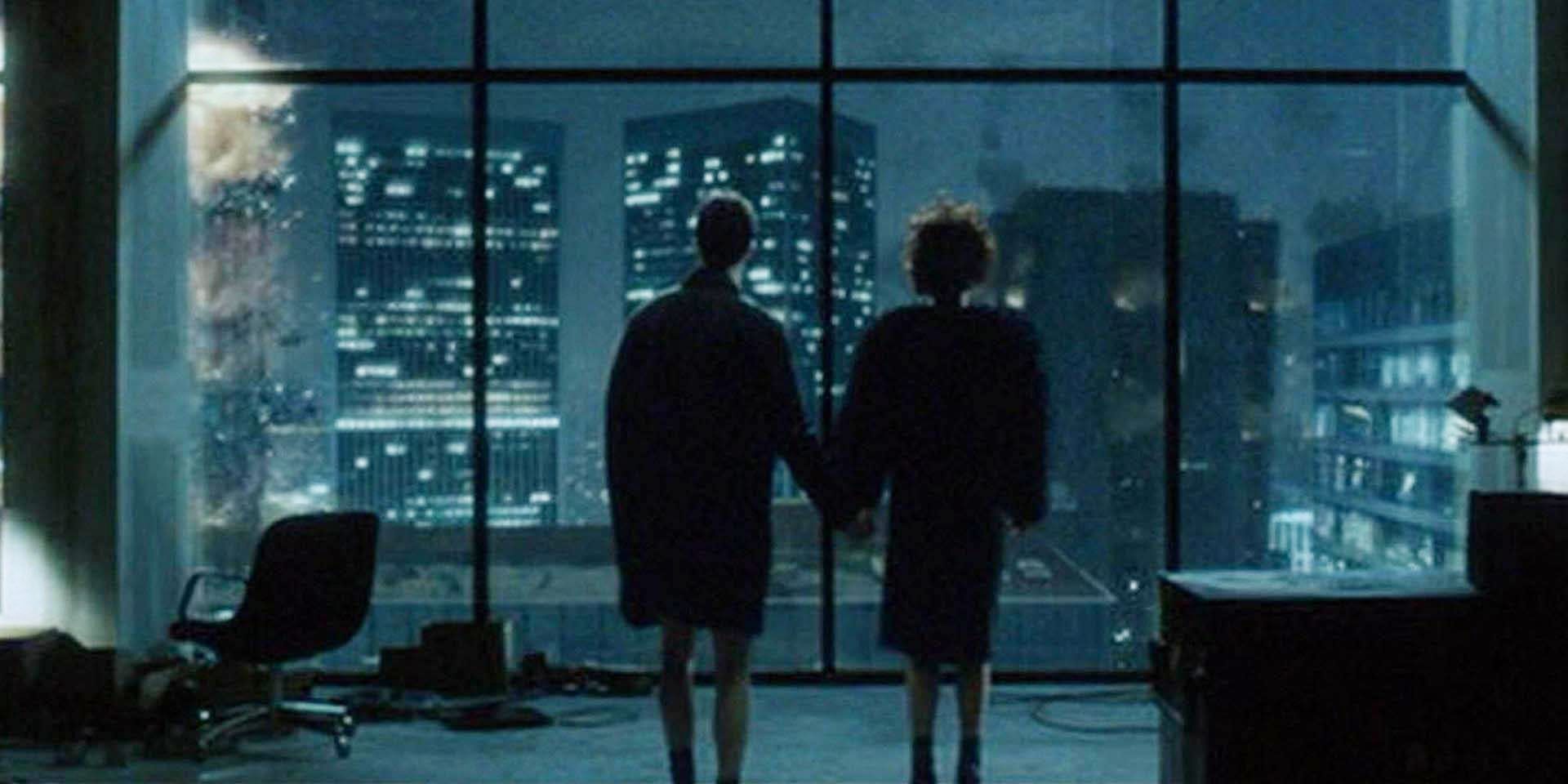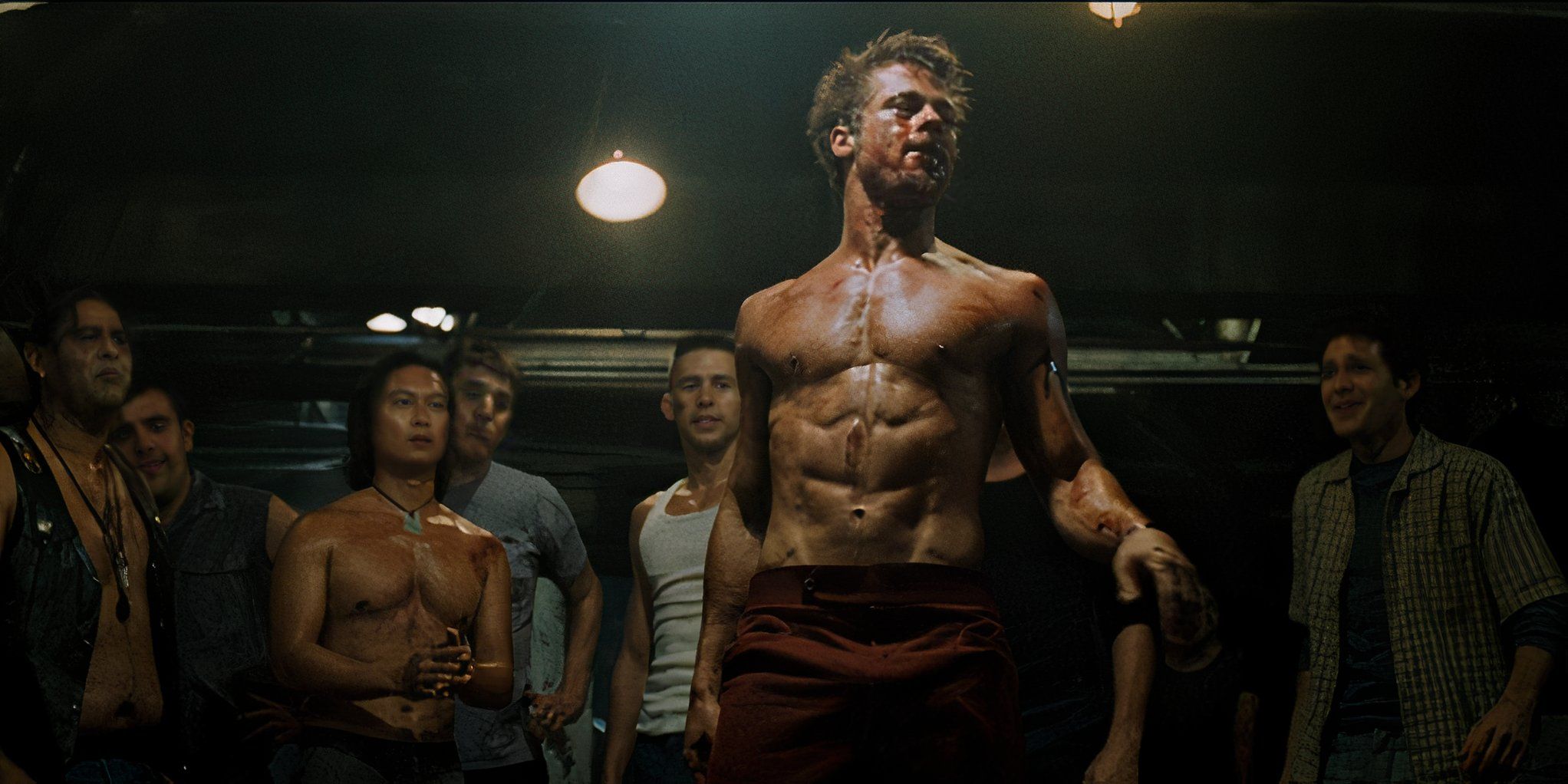
David Fincher Fight Club became a defining piece of 90s cinema and a biggest hit of all time. However, Chuck Palahniuk's original novel offers a distinctly different take on the narrator's story. While both versions masterfully explore themes of masculinity, consumerism, and identity, they diverge in several significant ways. From altered character dynamics to completely different endings.
The journey from page to screen resulted in countless creative decisions that reshaped Palahniuk's work, with the Fight Club creator still revealing some problems he had with Brad Pitt's iconic film. Some changes were necessary adaptations to the visual medium despite initial box office struggles, while others represented more deliberate choices about how to tell this complex story in a way that only David Fincher can.
10
How the Fight Club narrator meets Tyler Durden
A casual encounter on a nude beach
The first significant divergence between the book and the film occurs when the narrator meets his alter ego, Tyler Durden. In Palahniuk's novel, this pivotal encounter takes place on a nude beach, where Tyler creates art by positioning driftwood to cast a giant shadow at sunset. This ethereal, almost dreamlike introduction sets a different tone to their relationship, emphasizing Tyler's artistic nature and the surreal quality of their encounter.
Fincher's film moves this meeting to a plane, creating a more confined and tension-filled first interaction, where the two discuss how to make soap from human fat. The cramped space of the aircraft and Tyler's cryptic observations about emergency procedures establish immediate intrigue while also foreshadowing the story's explosive conclusion. This change grounds their initial encounter in the modern corporate world that the story critiques, while maintaining the element of chance in their encounter.
9
The film's explosive ending
Fincher's improvement creates an iconic moment
Fight ClubThe ending of features perhaps the most striking departure from its source material. In the film, the Narrator confronts Tyler's plans by shooting himself in the mouth, causing Tyler to disappear. He then reconciles with Marla, and together they watch Project Mayhem's plan unfold, resulting in the collapse of several buildings in a devastating display of anarchic destruction and giving audiences one of the most iconic scenes of recent decades.
Palahniuk's original novel did not do this. After the Narrator shoots himself, he wakes up in a mental hospital, believing it to be paradise. The ambiguity of this ending leaves readers questioning the reality of what they have just read, while also suggesting that some institutions continue to shape the Narrator's perception of reality. This more introspective ending focuses on the Narrator's mental state rather than the physical destruction of society's symbols. In this case, it could be argued that Fincher's take on the ending improved the overall story and cemented its legacy.
8
Project Mayhem's Ultimate Goal
Shadows of far-right ideology
The scope and objective of Project Mayhem's final plan differs significantly between versions. In the novel, the organization's ultimate goal focuses on a single, symbolic act of destruction: demolishing the Parker-Morris building so that it collides with a national museum. This targeted approach emphasizes the movement's intention to destroy cultural institutions and historical artifacts, rather than purely financial goals.
The film expands the scale of Project Mayhem's ambitions, targeting several credit card company buildings and financial centers. This shift in focus aligns more directly with the film's critique of consumer culture and debt slavery, while also providing the more visually stunning climax mentioned earlier. The change transforms Project Mayhem's mission from a symbolic attack on culture to a direct attack on the financial system, a portrayal that some members of the far right Fight Club fandom groups have taken to supporting their ideology.
7
The confrontation with the boss
A fight the narrator cannot win
The novel and film take radically different approaches to the Narrator's workplace rebellion. Palahniuk's version has the Narrator sending his boss photocopies of Fight Club's rules and threatening notes, creating a psychological confrontation that unfolds through written communication. This approach perhaps emphasizes the passive-aggressive nature of office politics that Palahniuk wanted to highlight in this story, as well as the narrator's initial reluctance to engage in direct conflict.
The scene of destruction of a different kind, because it was self-destructive, became equally iconic as a confusing form of empowerment that shocked audiences.
However, Fincher's adaptation turns this into one of the film's most memorable scenes, where the Narrator brutally beats himself in his boss's office. This physical manifestation of internal conflict provides a visceral demonstration of the Narrator's deteriorating mental state, while also serving as a harsh critique of corporate power dynamics. The scene of destruction of a different kind, because it was self-destructive, became equally iconic as a confusing form of empowerment that shocked audiences. Another example of Fincher undoubtedly taking the source material and improving on it.
6
Marla Singer's role in the climax
Connection above redemption
In the novel, Marla's final role takes an unexpected turn when she and members of her support group save the Narrator from the roof of the Parker-Morris Building. This intervention by the characters from the beginning of the story creates a circular narrative structure, suggesting that the very community that the Narrator initially explored becomes his salvation. Their return adds a layer of redemption to the story's conclusion.
The film recasts a fantastic performance by Helena Bonham Carter in the role of Marla, which she almost didn't play. After the Narrator shoots himself and Tyler disappears, he and Marla share a moment of reconciliation as they witness the destruction of the credit card buildings. This shift creates a more romantic conclusion, suggesting that authentic human connection may be the answer to the alienation that birthed Tyler Durden in the first place.
5
Tyler Durden's preview
Brad's perfect abs
The physical manifestation of Tyler Durden undergoes significant changes in adaptation. Palahniuk's novel describes Tyler as notably blond, with his hair "brighter than the yellow of the sun" and physically smaller than the Narrator. These specific details contribute to Tyler's almost angelic or mythical quality in the book, differentiating him from the Narrator's more mundane presence.
Brad Pitt's famous portrayal in the film presents a markedly different Tyler, with darker hair and a physically imposing presence that overshadows Edward Norton's Narrator. In one famous scene, Pitt appears shirtless, revealing his iconic six-pack, in a moment that juxtaposes his hypermasculine, idyllic form with Norton's much more average build. This visual contrast helps establish Tyler as the embodiment of everything the Narrator wants to be – mentally and physically. The film's Tyler becomes a more overtly masculine ideal, reinforcing themes about masculinity in crisis.
4
The Origin of Fight Club
I want you to hit me
The moment of the beginning of Fight Club, before the establishment of the 8 rules, reveals subtle but significant differences between the versions. The book presents the first fight as a spontaneous moment in a parking lot, with Tyler simply hitting the Narrator and asking him to fight back. This organic emergence of violence suggests a more instinctive response to modern male alienation.
The film keeps the parking lot setting and the two main characters fighting, but adds Tyler's now-iconic line: "I want you to hit me as hard as you can." This deliberate addition transforms the moment from a spontaneous occurrence into a more purposeful challenge to social norms. The specific dialogue elevates the scene into a memorable manifesto on male aggression and the desire for an authentic experience, while also giving the audience subtle hints about the internal dialogue that carries the story's central conflict (when you know the ending).
3
The mechanical scene
An evolutionary moment
One of the most notable divergences is in the handling of mechanical confrontation. In the book, all interaction exists purely in the Narrator's imagination, never going beyond fantasy. This approach emphasizes the Narrator's initial inability to act on his violent impulses, highlighting his reliance on Tyler to express his repressed aggression.
The film transforms this imagined confrontation into physical reality, staging a real fight between Fight ClubThe anonymous narrator and the mechanic. This shift charts the Narrator's evolution from passive observer to active participant in his own story, while also providing another visceral display of the violence that increasingly defines his world.
2
The Structure of Tyler's Appearances
He was Tyler all along
The book and the film deal with Tyler's presence throughout the narrative in different ways. Palahniuk's novel presents Tyler's appearances more sporadically, often tying them to specific locations and events. This approach creates a more fragmented narrative that reflects the Narrator's fractured psyche, with Tyler drifting in and out of the story like a ghost.
Fincher's adaptation maintains a more constant presence for Tyler once he's introduced, having him appear in multiple scenes and settings, with the only change being that it feels odd when he returns with a shaved head. This change creates a more fluid narrative progression, while also making Tyler's influence on the Narrator feel more pervasive and oppressive. The film's structure suggests Tyler's fuller integration into the Narrator's daily life, making the escalating conflict and eventual separation that much more dramatic.
1
The fate of the narrator after the end
Palahniuk's depressing follow-up
The book and film differ significantly in portraying the Narrator's ultimate fate. Palahniuk's novel continues beyond the climactic moment of self-discovery, following the Narrator to a mental institution where he receives letters from members of Project Mayhem and believes he is in heaven. This prolonged outcome provides a more complex analysis of the consequences of his actions, suggesting that institutional control remains even after his apparent advancement. Furthermore, with work that goes beyond the initial book, Palahniuk explored Marla's fate and the Narrator's future in more detail.
Even so, the film chooses to end with the Narrator at Marla's side, watching the destruction unfold after Tyler's disappearance. This more immediate conclusion focuses on the symbolic moment of liberation and potential romance, leaving the Narrator's long-term fate ambiguous. By avoiding the mental institution epilogue, Fight Club it maintains the impact of its climactic moment while suggesting the possibility of a new beginning.






